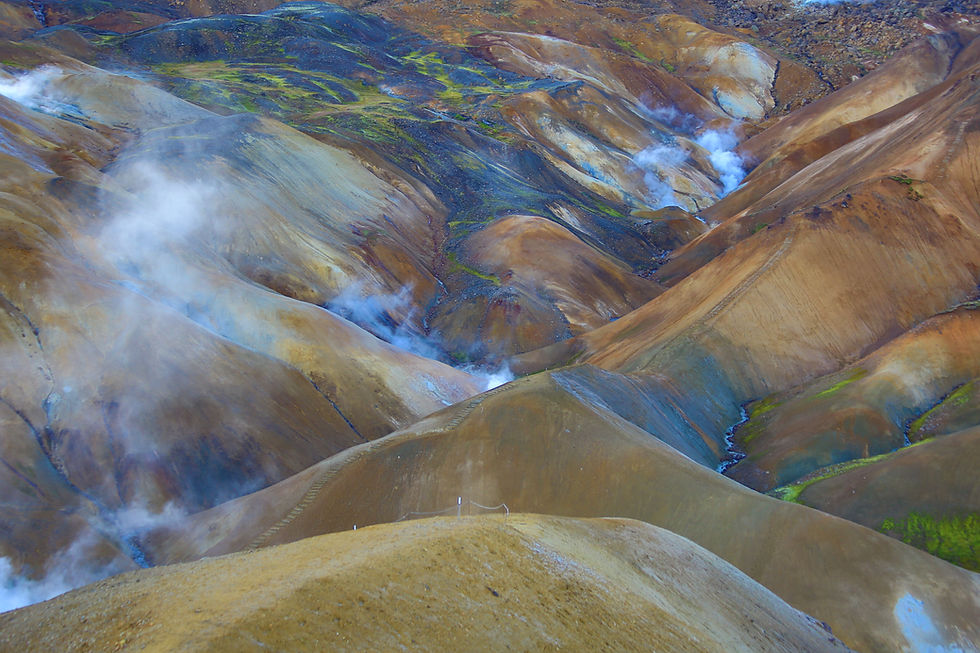Kahana State Park, Oahu, Hawaii.
- Apr 8, 2018
- 3 min read
Updated: Dec 12, 2022
The ahupua'a or land division of Kahana stretches from it's sheltered bay up to the top of the Koolau range between the peaks of Pu'u Ka'aumakua in the east and Pu'u Pauao in the west. At the size of 5228.7 acres, this makes it the second largest state park in Hawaii. Before the land division or Great Mahele, only royalty could own land. It was estimated that during that period, there were approximately 600-1000 native Hawaiians living in this valley before pre-contact. After the Great Mahele of 1848, a large portion of the land was granted to ali'i (royalty) Annie Keohokalole, mother of King Kalakaua and Queen Lilliuokalani, and the rest to the kanaka (indigenous native worker) who lived in the valley. In 1857, Annie sold her portion to a Chinese merchant named Ah Sing (his Hawaiian name was Apakana).

In 1874, several members from the local Church Of The Latter Day Saints got together and re-purchased Kahana from Ah Sing, and then proceeded to divide it among themselves. As time went by, some of the landowners sold their portion or were foreclosed, and through time the majority of the land was bought up by Mary Foster, a socially prominent woman who happened to be part-Hawaiian. She was in competition with Kaneohe Ranch and Lincoln McCandless for the overall ownership rights of the lands in the valley. After Mary Foster's death in 1930, the population of the ahupua'a of Kahana dwindled down until there weren't enough people to keep the estate functioning. Finally, in 1965, Senator John Hulten proposed to the Department Of Land and Natural Resources that there is much potential to developed Kahana into a regional park with potentially, campsites. Based on his recommendation, the state legislature appropriated $1,000,000 in 1965 to purchase it within a 5-year plan. In 1969, the state of Hawaii made its final payment and gained full ownership of the valley.

On the back walls of Kahana valley, there lies a long forgotten trail built by Japanese laborers in the early 1900's to service a series of water irrigation ditches that transports water over a distance of 25 miles from the very wet valleys of Kahana, Waikane and Waiahole to the dry leeward side of Oahu. Known as the Kahana Ditch Man Trail by a local hiking club, it is patiently being recovered by keeping the forest and undergrowth at bay.
As water was redirected to the drier side, in support of the vast commercially grown crops of the central plains, local farmers along Waiahole and Waikane streams suffered. This led to a battle for water which ended up in the Supreme Court in 1997. The courts ruled that 3.86 million gallons of water per day should be distributed to the leeward parties in comparison to the 27 million gallons per day that was previously diverted to leeward Oahu in 1990s.

When World War 2 broke out, some Japanese families who lived in the valley were sent to internment camp, and the military began to use the valley to practice jungle warfare. There are still remnants of the practice bunkers found in the valley floor.

Presently, as a 'living park', Kahana State Park is home to 31 families living in the valley, while assisting the public in interpretive and cultural programs that share the Hawaiian values and lifestyles.

The campsite and the surrounding beach is very popular with locals and tourists alike. There are two officially maintained Na Ala Hele trails in the valley - the Kapa'ele'ele trail, which is primarily to a lookout point for fish finders overlooking the bay, and the other is the Nakoa Trail, a figure-8 trail that loops around Kahana Stream towards the back of the valley.

Other than the 2 official trails, there are many places to explore deep within the valley. One such place is Pu'u Ohulehule, a pyramidal shape hill at 2265'. In August of 1999, 2 Danish hikers were trapped at the top for 8 days before being air lifted out by a helicopter. The were other instances where hikers got separated and lost.


This park is truly a treasure trove for the people of Hawaii, and certainly to the world at large. It is truly a tropical wild with a combination of beach activities, Hawaiian cultural activities, paragliding, hiking and stream swimming. Its history is varied and it offers challenges of many levels.


What are you waiting for? Kahana valley beckons!!





Comments